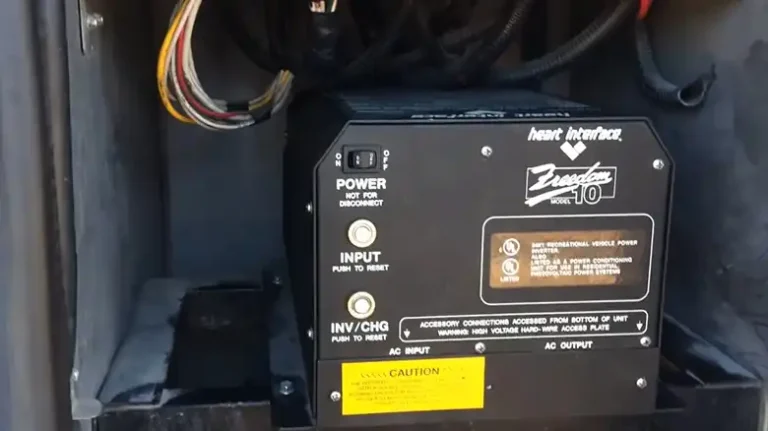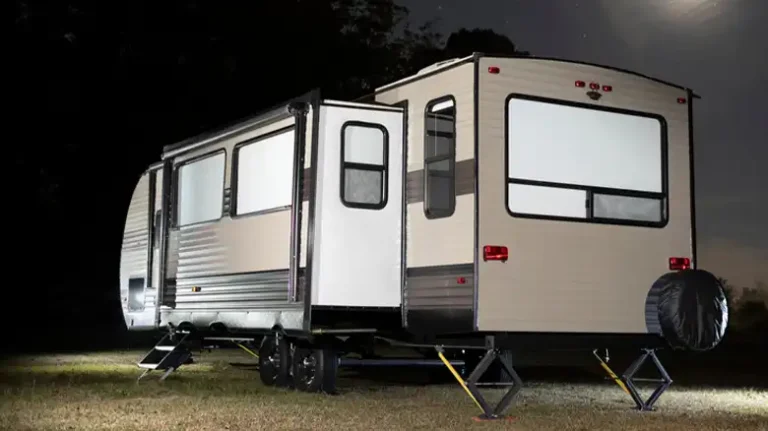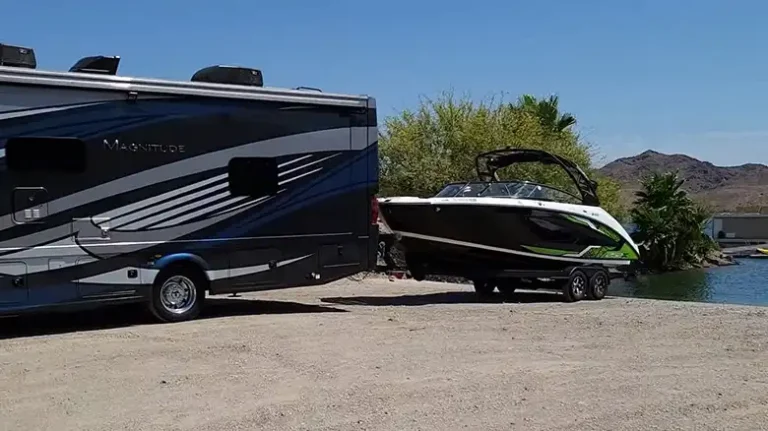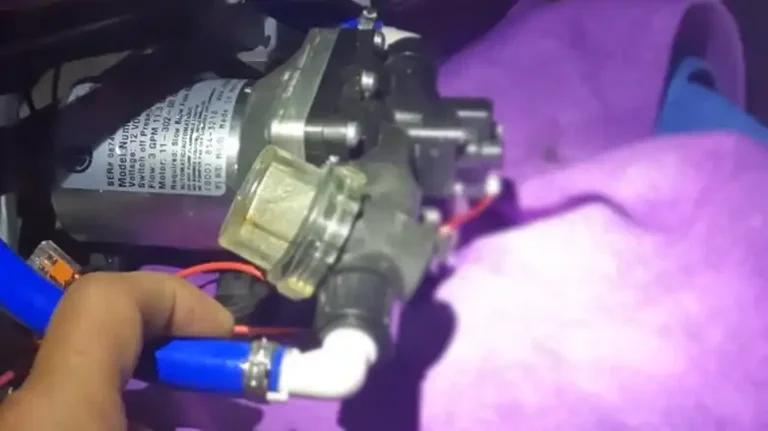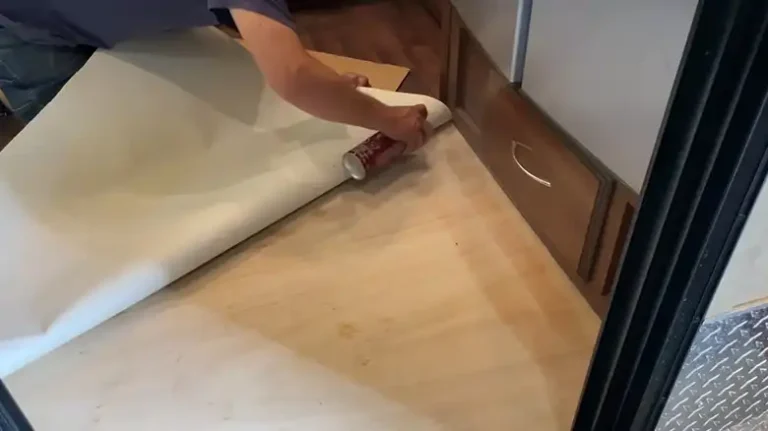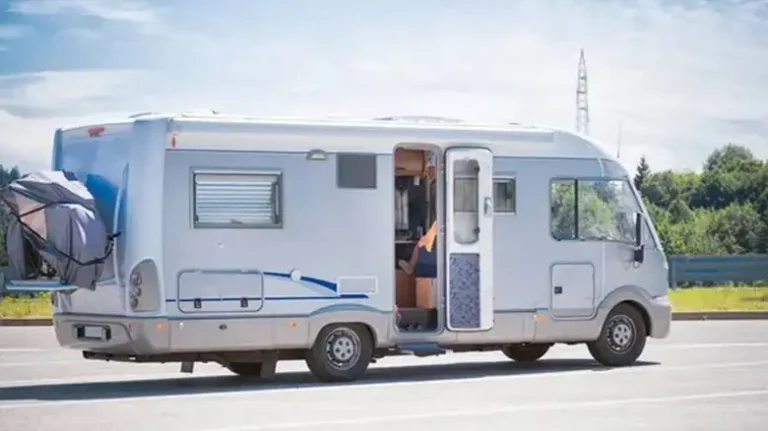No Water Coming Out of Hot Water Side in Camper (Things to Do)
While camping, I’ve encountered many challenges when it comes to keeping the comforts of home on the road. One of the most frustrating issues I’ve faced is the lack of hot water in my camper. If you’re like me and you’ve ever found yourself in a situation where there’s no hot water flowing from the taps. Most of the time, it’s an airlock or valve issue.
This comprehensive guide will help you understand why it happens, how to fix it, and, more importantly, how to prevent it from occurring in the first place.
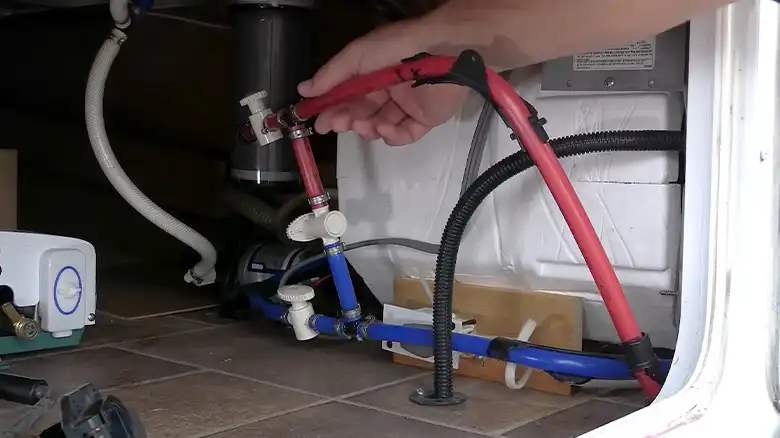
Before taking action against the problem, it’s essential to understand the potential reasons behind the absence of hot water in your camper. Here’s a closer look at the common culprits and Its solutions:
1. Lack of Proper Maintenance
When: Lack of maintenance can lead to a lack of hot water.
Why: Over time, sediment and scale can accumulate in your water heater tank, blocking the flow of hot water and reducing its efficiency. Additionally, airlocks, corrosion, and leaks can develop if your hot water system isn’t adequately maintained.
How to Fix and Prevent:
- Regularly flush and clean your water heater to remove sediment and scale.
- Inspect your water system for leaks and address them promptly.
- Properly winterize your system when it’s not in use to prevent damage.
2. Airlocks
When: Airlocks can occur when air gets trapped in your hot water lines.
Why: Air can infiltrate your system during maintenance or when the water heater is drained and refilled.
How to Fix and Prevent:
- Open the hot water faucet and let it run until all the air is purged from the lines.
- When draining and refilling the water heater, do so in a way that minimizes the introduction of air.
3. Sediment or Debris
When: Sediment or debris can accumulate in your water heater tank over time.
Why: The accumulation of sediment can clog the water heater’s heating element, leading to reduced hot water flow or temperature.
How to Fix and Prevent:
- Periodically drain and flush the water heater to remove sediment and debris.
- Consider using a water softener to reduce the mineral content in the water, which can slow sediment buildup.
4. Bypass Valve Position
When: If the bypass valve is in the wrong position, it can prevent hot water from entering your camper’s plumbing.
Why: The bypass valve is designed to allow for winterization, but if left in this position, it prevents the flow of hot water.
How to Fix and Prevent:
- Ensure the bypass valve is set correctly for normal operation.
5. Temperature Settings
When: Incorrect temperature settings on the water heater can result in no hot water.
Why: If the thermostat is set too low, the water may not get hot enough to be noticeable.
How to Fix and Prevent:
- Adjust the temperature settings on the water heater to your desired level.
6. Faulty Components
When: Various components in the hot water system can fail over time.
Why: Age, wear and tear, or manufacturing defects can cause components like thermostats, heating elements, or pressure regulators to fail.
How to Fix and Prevent:
- Replace faulty components as needed.
- Regularly inspect and maintain the hot water system to catch potential issues early.
Now that we understand the underlying causes of the no hot water problem, let’s delve into solutions and preventative measures to ensure you’re never left without hot water in your camper.
Troubleshooting and Fixing No Hot Water Issues
When you find yourself without hot water in your camper, it’s crucial to troubleshoot and address the problem promptly. Here’s a step-by-step guide on how to fix the issue:
Step 1: Check the Water Heater
Start by inspecting your water heater, which is the heart of your hot water system. Ensure that it’s turned on and functioning correctly. If you have a propane or electric water heater, make sure there’s a steady supply of power or gas.
- For propane water heaters, check that the gas supply is sufficient, and the gas valve is open.
- For electric water heaters, examine the thermostat and heating element to ensure they’re functioning.
If you have a tankless water heater, be patient. It might take a little longer to heat the water compared to a tank-based system.
Step 2: Check for Leaks
Examine your hot water system for any visible leaks. Leaks can lead to reduced water pressure and disrupt the flow of hot water. Repair any leaks you find.
Step 3: Check the Bypass Valve
Some campers have a bypass valve that allows for winterization without filling the water heater. Make sure the valve is in the correct position for normal operation.
Step 4: Check for Airlocks
Airlocks can occasionally get trapped in the hot water lines. To release the air, follow these steps:
- Open the hot water faucet and let it run for a few minutes until all the air has been purged from the lines.
Step 5: Check for Clogs
Sediment or debris can clog the water heater or hot water lines, causing a decrease in hot water flow. To address this:
- Periodically flush and clean the water heater to remove sediment and debris.
Step 6: Check the Faucet Aerator
Sometimes, a clogged faucet aerator can restrict the flow of hot water. Remove and clean the aerator if necessary.
Step 7: Consult the Owner’s Manual
Refer to your camper’s owner’s manual for specific troubleshooting tips and diagrams related to your hot water system. It may provide valuable information to help you address the issue.
Step 8: Seek Professional Help
If you’ve gone through these troubleshooting steps and still can’t resolve the issue, it may be time to consult a professional RV technician. They can perform more in-depth diagnostics and repairs to pinpoint the exact problem and provide the necessary fixes.
Preventing No Hot Water Issues in Your Camper
While knowing how to troubleshoot and fix the no hot water problem is essential, it’s equally important to take preventative measures to ensure you don’t encounter this issue in the first place. Here are some proactive steps you can take to prevent no hot water issues in your camper:
1. Regular Maintenance
Regular maintenance is the key to preventing many hot water issues. Here are some maintenance tasks to keep your system in top shape:
- Flushing the Water Heater: Periodically flush and clean your water heater to remove sediment and debris. This ensures that it operates efficiently and effectively.
- Inspect for Leaks: Routinely check your hot water system for leaks. Address any leaks promptly to prevent water wastage and damage.
- Winterization: When you’re not using your camper in cold weather, it’s essential to properly winterize the system. This protects it from freezing and damage during the off-season.
2. Minimize Sediment Buildup
Sediment buildup in the water heater can be a significant issue. To reduce sediment and minimize the risk of clogs, consider using a water softener. Softened water contains fewer minerals, which can slow down sediment accumulation in your water heater.
3. Check the Bypass Valve
Ensure that the bypass valve is always in the correct position for normal operation. This simple step can prevent the unintentional blocking of hot water flow.
4. Monitor Temperature Settings
Keep a close eye on the temperature settings of your water heater. Make sure the thermostat is adjusted to your desired temperature level to ensure a consistent supply of hot water.
5. Regular Inspections
Conduct regular inspections of your hot water system. Look for signs of wear and tear, corrosion, or aging components. By catching potential issues early, you can prevent more significant problems down the road.
FAQs with Answers
- 1. How often should I flush my water heater?
It’s recommended to flush your water heater at least once a year to remove sediment and debris. However, the frequency may vary depending on the hardness of your water and the size of your tank. Some campers might benefit from flushing every six months or even more frequently.
- 2. What is the ideal water heater temperature setting for a camper?
The ideal water heater temperature setting in a camper typically ranges from 120°F to 140°F (49°C to 60°C). However, you should adjust the temperature to your personal preferences while keeping safety in mind. Be cautious not to set it too high to prevent scalding.
- 3. Can I replace the water heater components myself?
Some water heater components, like thermostats and heating elements, can be replaced by DIY enthusiasts with a good understanding of RV systems. However, it’s essential to exercise caution, follow safety guidelines, and consult your owner’s manual for specific instructions. If you’re unsure, it’s best to seek professional assistance.
- 4. How do I properly winterize the hot water system in my camper?
Winterizing your hot water system involves draining the water heater, bypassing it, and using RV antifreeze to protect the plumbing from freezing. The process can vary depending on your specific camper and water heater. Consult your owner’s manual for step-by-step instructions or consider hiring an RV technician to perform the winterization for you.
Wrap Up
As an avid camper, experiencing a lack of hot water is a frustrating setback. However, by understanding the potential causes, troubleshooting effectively, and taking preventative measures, you can ensure that you always have a reliable supply of hot water in your camper. Regular maintenance, proper temperature settings, and regular inspections are your best allies in preventing no hot water issues. By following the guidance in this article, you can enjoy hot showers and cozy evenings in your camper without a hitch.

